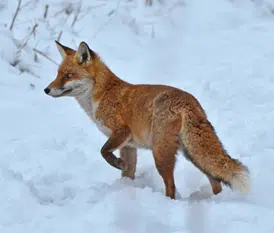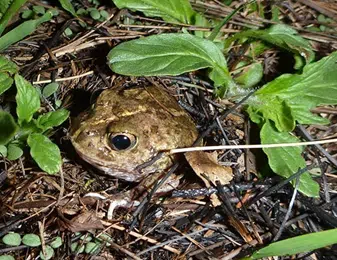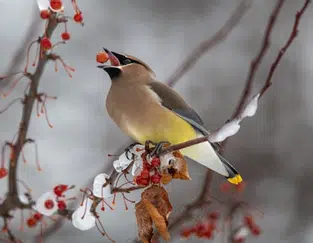 Have you ever wondered where certain animals go during the winter? Some animals like wood ducks, mallards, certain butterflies, and other migratory birds will fly south to find warmer temperatures. While other organisms like skunks, groundhogs, insects, amphibians, foxes and more, stay home and brace the cold weather in a practice we call overwintering. Overwintering refers to the process by which an organism survives the winter season, when the months are colder and food is more scarce which makes survival even more of a challenge.
Have you ever wondered where certain animals go during the winter? Some animals like wood ducks, mallards, certain butterflies, and other migratory birds will fly south to find warmer temperatures. While other organisms like skunks, groundhogs, insects, amphibians, foxes and more, stay home and brace the cold weather in a practice we call overwintering. Overwintering refers to the process by which an organism survives the winter season, when the months are colder and food is more scarce which makes survival even more of a challenge.

Hibernation is a state that organisms enter in order to conserve energy, typically during the winter, their body temperature lowers and they do minimal to no activity so they don’t require very much food or water. Many animals like frogs, toads, snakes, and bears will hibernate during the winter. However, this looks different for different organisms. For example, some frogs will hibernate underwater or even buried in mud! While other organisms like bears will create a den, typically in downed trees, caves, brush piles and even man-made structures like culverts or storm sewers.
On the other hand, a lot of animals will stay active over the winter. Animals like foxes, some squirrels, deer, and many others will develop a warmer coat and a layer of fat to keep them warm. They will continue to forage and hunt throughout winter. Their diet may change during the winter based on food availability. For example, certain birds may eat more seeds as opposed to insects since the insect population is more scarce in the winter.

So what can you do to help with overwintering habitat for our neighborhood wildlife?
- Leave a few piles of leaves, rake them into a corner if you prefer them to be less visible. This will give frogs, toads, salamanders, and more a place to hibernate during the winter.
- Plant native trees and shrubs that produce seeds and berries. These will provide sustenance for birds and other wildlife when other food sources are scarce.
- Leave perennials untrimmed until spring time, the seeds will feed songbirds for the winter and can provide shelter as well.
